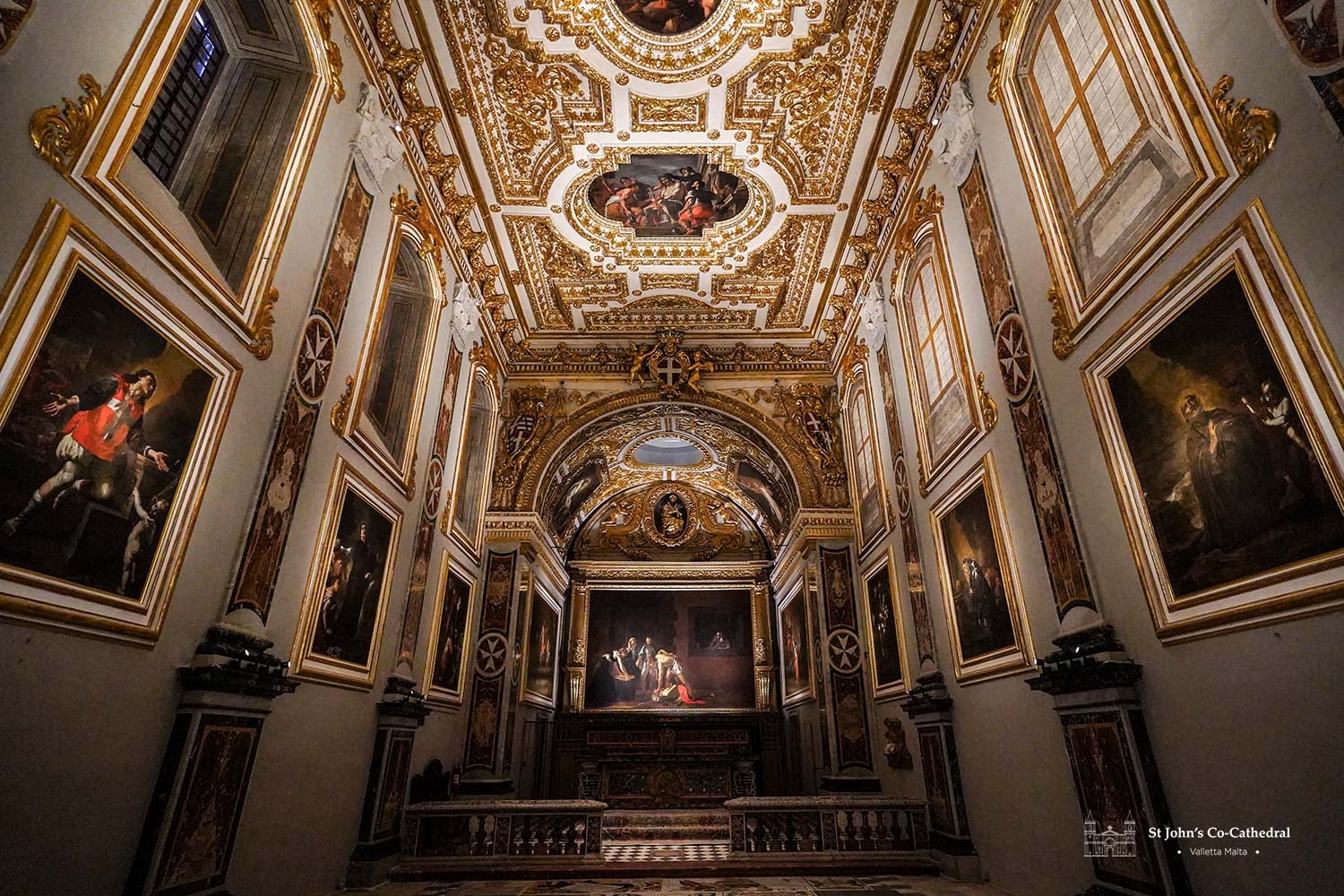
Facts on the Oratory Windows | Press Statement by The St John’s Co-Cathedral Foundation
The St John’s Co-Cathedral Foundation is pleased to note that work on the new museum construction project is progressing at a fast pace. This press statement is being published to provide clarifications and factual information on the impact of the works on Caravaggio’s iconic painting, ‘The Beheading of St John the Baptist’.
The Oratory that houses the ‘The Beheading of St John the Baptist’ underwent an ambitious renovation led by Mattia Preti, which renovations and structural changes were finished in 1695. According to an article published in The Burlington Magazine in 1997, David M. Stone, Professor Emeritus of the University of Delaware Newark, these renovations “eradicated most traces of the original environment for Caravaggio’s Beheading” located on the southeast wall. The interventions done by Preti included the blocking of the sixth window on the northeast side, which was in line with the fifth window in contention.
It follows that the fifth window could not have been the aperture that allowed natural light to fall on the painting because it is too distant from the painting itself to participate in the chiaroscuro of the image; this coupled with the fact that the triumphal-arch in front of the Beheading, constructed in the time of Preti, further distanced it from the said fifth window and the natural light.
The sixth window, closest to where the painting of the ‘Beheading’ hung, was blocked off by Preti himself. Further still, it is unlikely that this window illuminated the painting effectively. In all probability, it caused raking light not allowing the viewer to see the picture properly. In reality, the ‘light’ in the painting is a ‘painted’ light. It is the well-crafted chiaroscuro and the luce di cantina technique that gives the illusion of external light entering the scene.
For the last decades, the windows have been kept firmly shuttered to keep light out of the Oratory because UV rays in natural light have been scientifically proven to damage all organic materials including canvas paintings, particularly their varnish layer. To mitigate this situation, just two years ago, the Foundation installed a state-of-the-art LED lighting system to ensure the correct lux levels and preserve the precious Beheading painting from any possible light damage.
The necessity for the closure of the fifth window emanates from the ongoing New Museum Project, which was granted planning permission in 2016 following public consultation, approval from the Superintendence of Cultural Heritage and from UNESCO.
Of pivotal importance in the drawing up of the programme was the provision of a space large enough to house the whole set of twenty-nine Flemish tapestries together in one area, one of the Co-Cathedral’s most precious possessions, currently temporarily exhibited in the Co-Cathedral. Fortunately, the space on the first floor facing Merchants’ Street was available, providing exactly the right amount of perimeter wall space, from the outer face of the Oratory wall to the building line on Sta Lucia Street, that was required. This will allow the tapestries to remain on the site of the Co-Cathedral, in a purposely built space which will be scientifically designed to provide the best conservation environment for these delicate and fragile artefacts.
In such large and complex projects there are always carefully balanced choices that need to be made. The decision to block up a fifth window in the Oratory, an intervention without which the space requirements of the tapestry collection would not have been satisfied, was, having considered all the requirements of the new museum, indeed a just choice. This is upheld further by the fact that the interior of the Oratory remains unaltered and that the re-contextualisation of the original setting for Caravaggio’s Beheading actually took place in the late 1600s by Mattia Preti and not as a result of the new museum project, as some interpretations are attempting to erroneously conclude.
The Foundation reiterates its dedication and sole commitment to maintain the highest standard of cultural stewardship and conservation to preserve, restore and maintain for the generations of today and tomorrow, all the invaluable artworks, artefacts and the architectural gem of the Co-Cathedral itself. Testament to this commitment is the continuous and numerous restoration projects with the very latest being the restoration of the set of Flemish tapestries which are currently adorning the Co-Cathedral and for which, the public have overwhelmingly shown keen interest, enthusiasm and support confirming the Foundation’s conviction that the new museum project is not only timely but also indispensable for the preservation and accessibility of our rich artistic heritage.